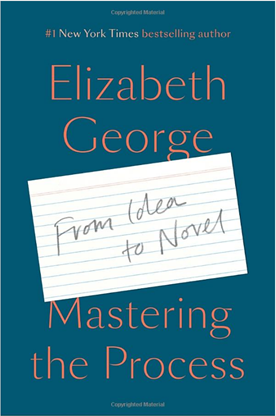One of the topics that can get writers in a lather is outlining. Do you, or don’t you? How do you do it?
As you can imagine, the answers are much more complex than simple yes/no. They also can lead to rather heated exchanges as to the sanity of the chosen method and its adherents. (Full disclosure, I’m an outliner, not a pantser.)
I recently read Elizabeth George’s book, Mastering the Process: From Idea to Novel.

This book describes her own writing process (based upon a quite successful career writing mystery novels). I found the book helpful in that it reinforced some things I knew already and gave me new insights into quite a few things that I hadn’t considered from quite the same angle before. It is definitely worth a read.
One of the things George describes is her outlining process. I’m not going to give the details here, only a sketch of the method she described (buy the book). This sketch should still give you insights into how one successful writer works. Of course, this is my interpretation of what she wrote. Others may have a different interpretation. If you significantly disagree with what I’ve written, please engage with me. I’d like to correct my understanding if I’ve missed the point somewhere.
First, she does a lot of work prior to attempting an outline. That work includes defining the tone of the book, its plot kernel (the through-line of the story—she writes mysteries, so she needs to know at least who the killer is, who the victim was, and what the motive was). After completing her research on locales and developing her character analyses (and quite a lot of her book describes how and why she does that), she’s decided where the story will begin. She knows what the inciting incident is and whether the story starts before, during, or after that event. Now she does what she calls a step outline.
The step outline process allows her to examine the status quo of each point of view character and how she intends to disrupt that. This process is quite unconstrained. She throws out ideas to herself as to how she might proceed. Having generated many ideas for each POV character, she picks from her list of possible events scenes for each POV character. Her choices ensure that each scene possesses causality and, perhaps, poses dramatic questions– it is going to cause more things to happen in the story.
George is content to identify ten to twenty scenes in that manner. She shuffles those around to place them in the actual order in which they make the best dramatic sense to occur in the novel. That is enough to get her ready for the next step—a running plot outline. The running plot outline is her narrative overview of what will happen, where, and why.
Crucially, she does not attempt to plot out the entire novel at once. Thus, although she is an outliner, she’s working to preserve her ability to react creatively as the writing progresses. Although, at the moment, I can’t find where she explicitly says so, I believe that she iterates on that process, extending both the step outline and the running plot outline as needed.
